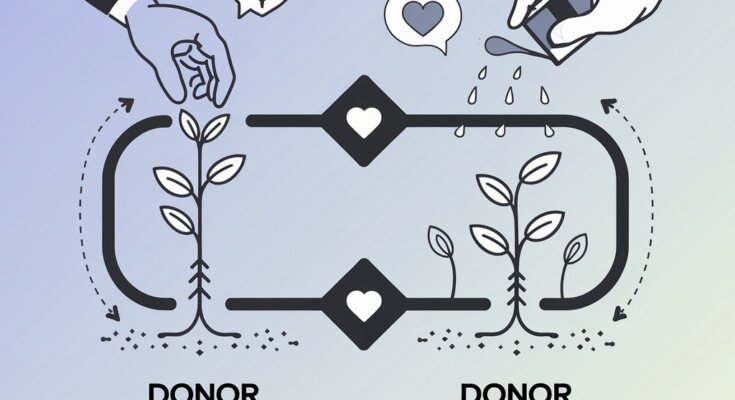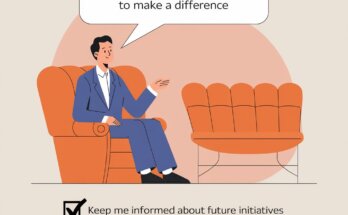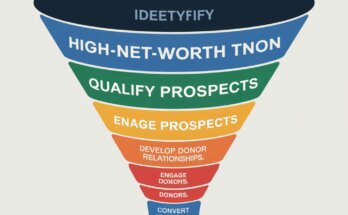In the vibrant world of nonprofit organizations, where passion meets purpose, understanding the concept of donor relations is vital for long-term success.
Donor relations encompass the strategies and practices used to cultivate, maintain, and enhance relationships with individuals and organizations that contribute financial support to nonprofits.
It’s not just about asking for funds; it’s about building meaningful connections that lead to a thriving community of supporters. T
his blog post will explore what donor relations mean, the strategies to effectively manage these relationships, and how your organization can benefit from strong donor engagement.
The Importance of Donor Relations
When it comes to nonprofits, the heart of their operations lies in donor support.
Donor relations are crucial because they help organizations achieve their missions by fostering loyalty and trust among their supporters.
Happy donors are more likely to give again, introduce others to the cause, and engage with the organization in various ways. This is why investing time and resources in donor relations is essential.
Imagine your nonprofit as a garden. Each donor is a seed. With proper care—attention, communication, and gratitude—those seeds can grow into strong plants that bear fruit for years to come. Without adequate nurturing, however, they may wither and die, leaving your organization without the resources it needs to flourish.
Key Strategies for Effective Donor Relations
Now that we understand what donor relations are, let’s delve into practical strategies to enhance these vital connections.
1. Personalized Communication
One of the most effective strategies in donor relations is personalized communication. Donors want to feel valued, not like just another name on a list. Tailoring your communication to reflect each donor’s interests and contributions can significantly strengthen your relationship.
Example: If a donor has previously funded educational programs, send them updates about those specific initiatives. Share stories about the students impacted by their generosity. This personalization shows that you recognize their support and are actively using their funds in meaningful ways.
2. Regular Updates
Keeping donors informed about your organization’s progress is crucial. Regular updates help build trust and transparency, showing that you are accountable for their contributions.
Example: Consider sending out a quarterly newsletter that highlights achievements, upcoming events, and the impact of donations. Make sure to include donor spotlights to recognize their contributions publicly. This not only keeps donors informed but also encourages them to stay engaged with your mission.
3. Thank-You Campaigns
Never underestimate the power of a heartfelt thank-you. A simple “thank you” can go a long way in making donors feel appreciated and valued.
Example: After receiving a donation, follow up with a handwritten note expressing your gratitude. This personal touch can make a significant impact and sets the stage for future donations. Additionally, consider creating a thank-you campaign where you share the impact of their contributions through social media, showcasing how their support has made a difference.
4. Donor Stewardship Plans
A donor stewardship plan outlines how your organization will manage relationships with donors over time. This plan should include strategies for engaging, thanking, and communicating with donors, ensuring they feel valued throughout their journey with your nonprofit.
Example: Create a timeline for donor engagement that includes sending thank-you notes, invitations to exclusive events, and regular updates. By having a structured plan, you can ensure that no donor feels neglected and that their journey with your organization remains positive.
A Real-Life Story of Donor Engagement
Let’s take a moment to highlight a real-life example of effective donor relations.
Case Study: The Community Builders Project
In a small town, a nonprofit called the Community Builders Project aimed to revitalize local parks. Initially, their funding came from a handful of larger donors. However, they realized that they needed to engage more community members to sustain their efforts.
They implemented a comprehensive donor relations strategy that included personalized communication. Every donor received updates about the progress of the park renovations, highlighting specific areas where their funds were utilized. They held monthly community meetings where donors could meet the project team, ask questions, and share feedback.
As a result, not only did they increase their donor base, but they also fostered a sense of ownership and community among supporters. People felt more connected to the cause, and many even volunteered their time for the project. This strategic engagement transformed casual donors into passionate advocates for the nonprofit’s mission.
5. Cultivate Major Gifts
Major donors often have a significant impact on your organization’s funding. Cultivating these relationships requires special attention and tailored strategies.
Example: For your major donors, arrange exclusive meetings or events where they can interact with your board members or program leaders. This engagement makes them feel more connected and invested in your mission. Share specific funding needs and how their contributions can create lasting change.
6. Use Technology Wisely
In today’s digital age, leveraging technology can enhance your donor relations efforts. Utilize donor management software to track interactions, contributions, and preferences. This information allows you to tailor your communications and follow-ups more effectively.
Example: A simple database can help you track donor anniversaries, birthdays, and previous interactions. Automated birthday emails or special acknowledgments can surprise and delight donors, reinforcing your commitment to personalized communication.
7. Solicit Feedback
Feedback from donors can provide valuable insights into your organization’s effectiveness and areas for improvement. It shows donors that you value their opinions and are committed to evolving as an organization.
Example: After a fundraising event, send out a survey to attendees asking for feedback on their experience. Use this data to enhance future events and demonstrate to donors that their voices matter.
8. Create Donor Engagement Opportunities
Provide various opportunities for donors to engage with your organization beyond monetary contributions. This could include volunteering, attending events, or participating in surveys.
Example: Organize a volunteer day where donors can come together to help with a project related to your mission. This not only deepens their connection to the cause but also allows them to meet other supporters, creating a community around your organization.
9. Share Impact Stories
People want to know that their contributions are making a difference. Sharing impact stories can showcase how donations are used to create real change.
Example: Regularly feature success stories on your website and social media platforms. Highlight individuals or communities positively impacted by your organization’s work. This storytelling not only informs donors but also inspires them to continue supporting your mission.
10. Involve Donors in Decision Making
Involving donors in decision-making processes can foster a deeper connection. This could include inviting them to participate in strategic planning sessions or seeking their input on new initiatives.
Example: Organize focus groups with key donors to discuss future programs or campaigns. By valuing their insights, you create a sense of partnership and commitment that can lead to long-lasting support.
Conclusion:
Donor relations are essential for the sustainability of nonprofit organizations.
As you explore these strategies, remember to download the Top 10 Donor Stewardship Strategies for Nonprofits + Free Donor Engagement Checklist, to help you further refine your approach.
Finally, if you’re eager to continue learning about effective donor relations and other expert tips for nonprofit success, subscribe to the Nonprofit Navigators Newsletter.
Join our community and stay informed about the latest resources and strategies to elevate your organization’s impact!




